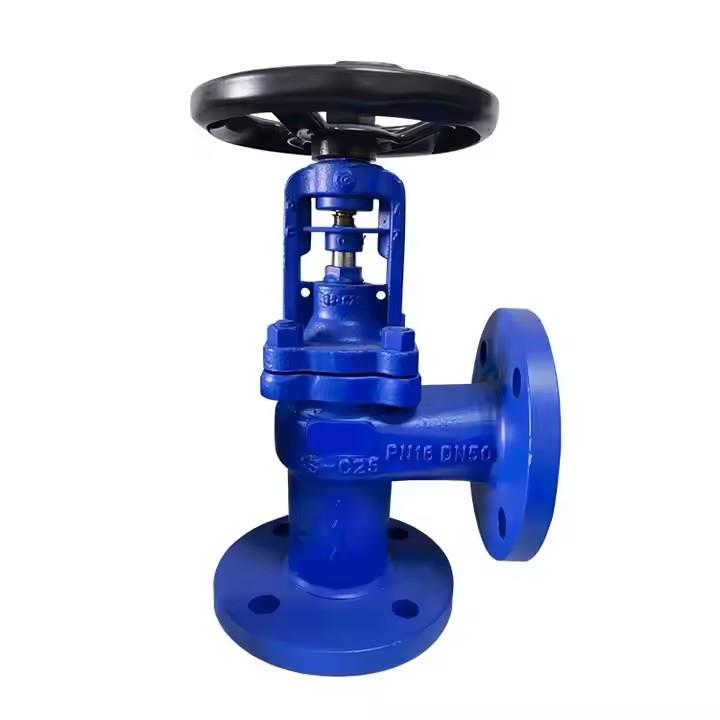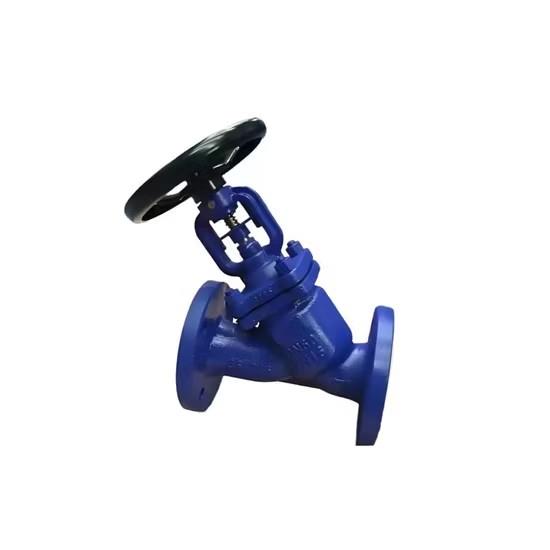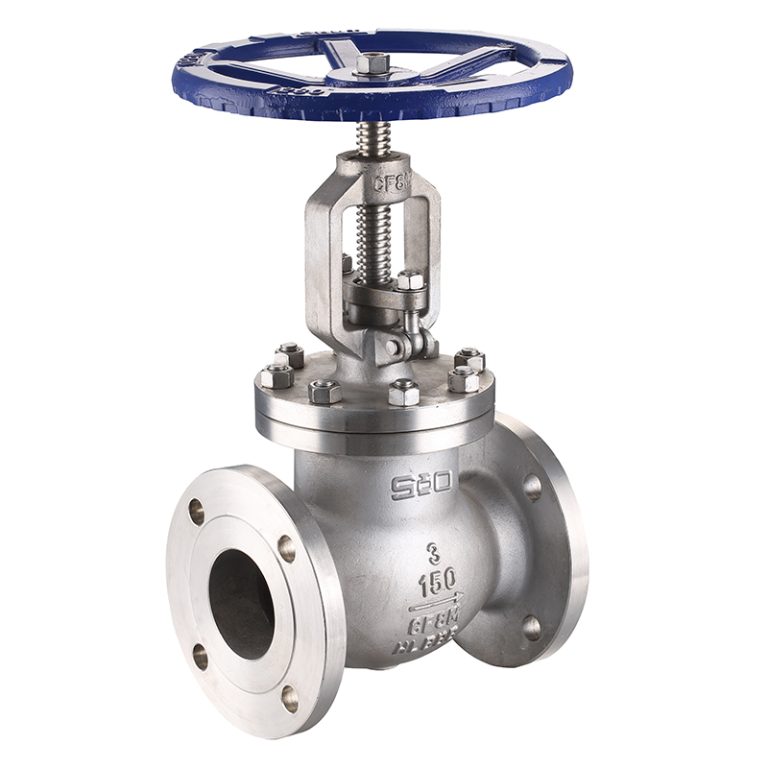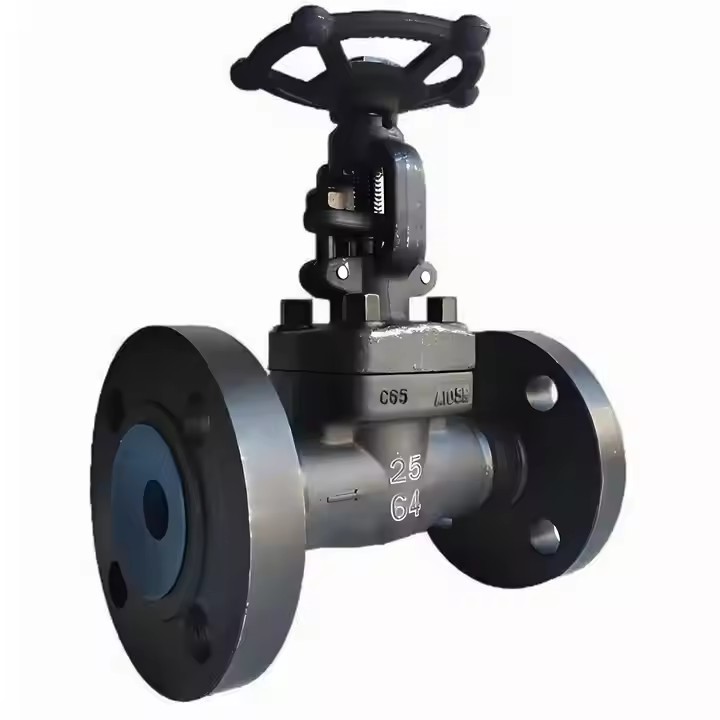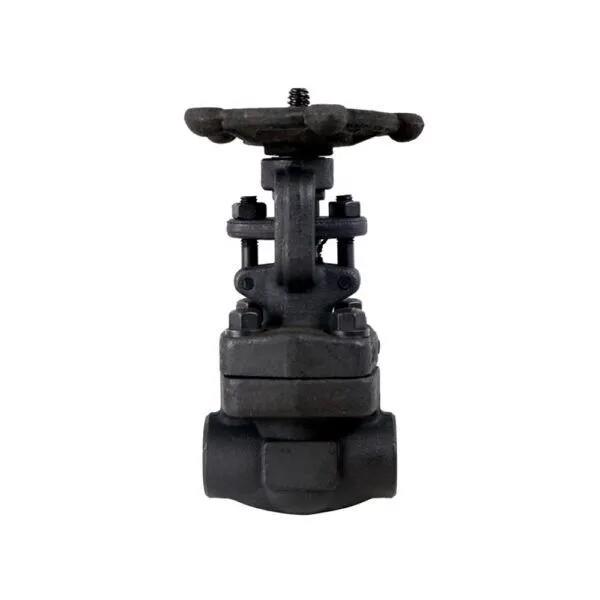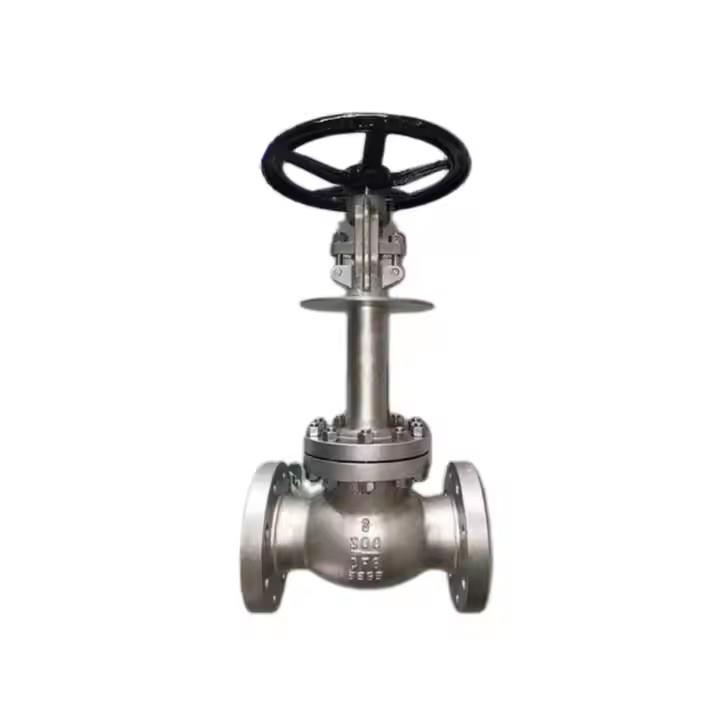Steam Globe Valve
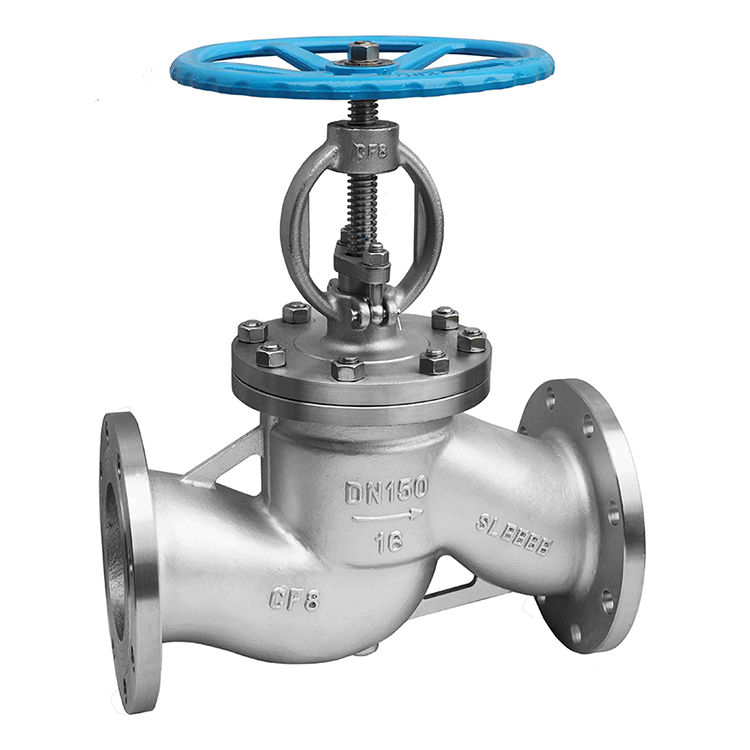
Steam globe valve is a shutoff valve used in the steam pipes. It is maily used to control the steam flow and off. The valve must be fitted in the steam pipe.
The steam globe valve, also known as the bellows globe valve, adopts a double-layer bellows design. The bellows are welded to the valve stem to maintain stable operating performance and avoid the vibration of the valve stem caused by the vibration of the valve plug.
This valve is to control the flow of steam through the lifting of the valve core. When the valve core rises, the valve opens, and steam can pass through; when the valve core descends, the valve closes to cutoff the flow of steam.
Main features of the steam globe valve.
- Seat faces lapped for a smooth finish and superior sealing;
- Swivel disc for optimal seating and longer seat life;
- Stems of hand wheel operated valves are rotating/rising design;
- Each valve is shell, seat, and backseat pressure tested per industry standard API 598;
- The gland is two piece gland/gland flange design for optimal alignment and uniform packing compression;
- Alternate valve materials such as chrome and stainless steel alloys -Alternate trim materials -Bypass, drain, and other auxiliary connections -Gear, motor, and cylinder actuators available.
Technical Specifications
| Body material | Forged Steel, Carbon Steel, Stainless Steel |
| Nominal diameter | 1/2″~2 1/2″ |
| Pressure range | Class150~2500(PN10~PN420) |
| End connection | RF, RTJ, BW |
| Working temperature | -29℃~560℃ |
| Operation | Handwheel, Gear Box, Electric Actuator, etc. |
Main Part Material
| No | Part | Material |
| 1 | Body | ASTM A105 |
| 2 | Seat Ring | ASTM A105 +13Cr |
| 3 | Disc | ASTM A105 +13Cr |
| 4 | Gasket | Graphite + SS304 |
| 5 | Stem | ASTM A276 410 |
| 6 | Bonnet | ASTM A105 |
| 7 | Bonnet Bolt | ASTM A193 B7 |
| 8 | Stem Packing | Reinforced Graphite |
| 9 | Gland | ASTM A276 410 |
| 10 | Gland Flange | ASTM A105 |
| 11 | Handwheel | ASTM A197 |
The data is for reference only, please consult sales@wayvalve.com for details.
Application Fields
- The petrochemical industry is one of the main application fields of steam globe valves. In petrochemical production, steam globe valves are used to control the flow of high – temperature and high – pressure steam and other industrial gases, ensuring the safety and stability of the production process.
- Steam globe valves also have a wide range of applications in the thermal power generation industry. Equipment such as boilers and steam turbines in thermal power generation need to use steam globe valves to control the flow and pressure of steam.
- The chemical industry is also an application field of steam globe valves. In chemical production, it is necessary to control the flow and pressure of various gases and liquids, and steam globe valves can well meet this need.
- Steam globe valves have a wide range of applications in food production. High – temperature steam is required for operations such as baking and sterilization in food production, and steam globe valves can effectively control the flow and temperature of steam, ensuring the quality and safety of production.
- Steam globe valves are also essential equipment in pharmaceutical production. During the drug production process, it is necessary to strictly control the flow and temperature of various substances, and steam globe valves can well achieve this operation.

Which is better globe valve or ball valve for steam?
Both globe valves and ball valves have their own advantages for steam applications, and which one is better depends on specific requirements.
Globe valves offer good throttling control, which allows for precise regulation of steam flow. They can provide a more gradual reduction in flow rate, making them suitable for applications where fine-uning of the steam flow is crucial. However, they have a relatively higher pressure drop compared to ball valves.
Ball valves, on the other hand, have a nearly straight-through flow path, resulting in low-pressure drop and high-flow capacity. They are capable of quick opening and closing, which is beneficial for applications that require rapid on-off control of the steam flow. But their throttling performance is not as good as that of globe valves.
In general, if precise throttling control is the main concern, a globe valve may be a better choice. If low-pressure drop and fast-acting operation are more important, a ball valve is often preferred.
INQUIRY

